A digital archive of artworks experienced in person while visiting art museums, galleries, and independently-run spaces. All images are taken via iPhone.
Don't wanna be here? Send us removal request.
Photo
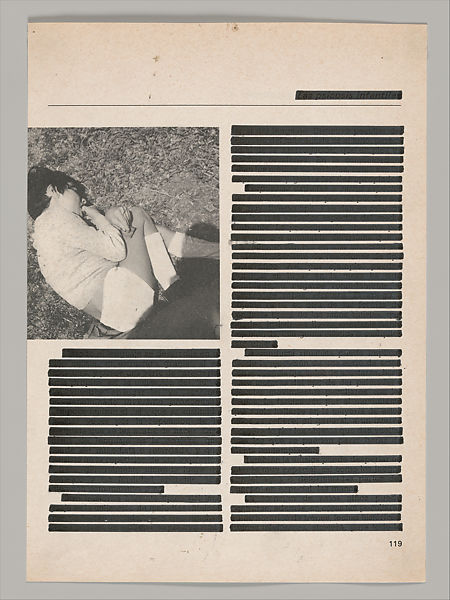
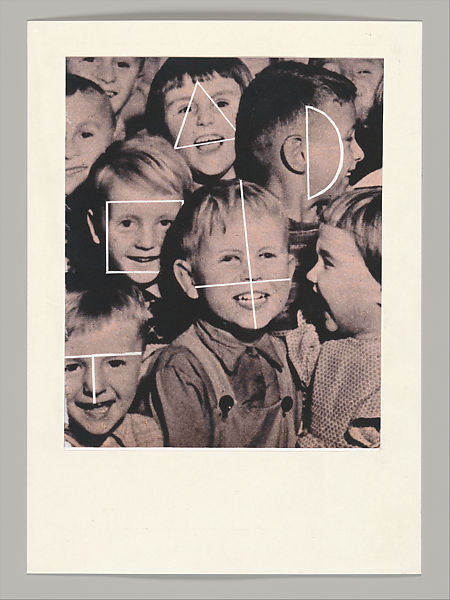

Seen: The Metropolitan Museum of Arts, New York 2018
Artist: Eva Koťátková
Title: Untitled (Unlearning Instincts)
Date: 2013-14
Materials: Collages on paper
About the Artist: Eva Kotatkova’s large-scale installations explore how social structures such as community, family, and institutions relate to individual experiences and the creative process. Her immersive environments, built from diverse imagery drawn from historical and contemporary culture, resemble magnified cabinets of curiosity or tangible dreamscapes. For her celebrated installation Asylum (2013), presented at the 2013 Venice Biennale, Kotatkova explored how institutions organize and archive their activities, and how these systems affect the individuals involved. She layered images and objects, which were suggestive of cages, walls, blindness, and secrecy, to create a dense psychological topography related to confinement. Kotatkova’s small-scale collages and sculptures fuse portraits of unidentified people and images of the human body with everyday objects, creating surreal hybrids.
1 note
·
View note
Photo

Seen: The Metropolitan Museum of Arts, New York 2018
Artist: Elizabeth Catlett
Title: Head of a Woman (Woman)
Date: 1942-1944
Materials: Oil on linen canvas
About the Artist: Elizabeth Catlett was an African-American artist who explored themes relating to race and feminism in her range of sculpture, paintings, and prints. Like her peer Norman Lewis, Catlett highlighted the struggle of black people with her art. Responding to segregation and the fight for civil rights, Catlett’s depictions of sharecroppers and activists showed the influence of Primitivism and Cubism. “I have always wanted my art to service my people—to reflect us, to relate to us, to stimulate us, to make us aware of our potential,” she once stated. Born Alice Elizabeth Catlett on April 15, 1915 in Washington, D.C., she was awarded a scholarship to attend the Carnegie Institute of Technology in Pittsburgh—only to have the offer rescinded on the basis of her race. She then enrolled at Howard University and went on to study under Grant Wood at the University of Iowa, becoming the first African-American woman to graduate with an MFA from the school. In the 1940s, she traveled to Mexico on a fellowship and began to paint murals influenced by the work of Diego Rivera and Frida Kahlo. The Mexican muralist’s spirit of activism inspired Catlett to produce images of hardship by African-American women in the South, as depicted in Sharecropper (1952)—one of her most famous works. While she was in Mexico, she created a series of linocut prints featuring prominent black figures to promote literacy in the country. From 1975 until her death, she lived and worked between Cuernavaca, Mexico and New York, NY. Catlett died on April 2, 2012 in Cuernavaca, Mexico at the age of 96. Today, the artist’s works are held in the collections of The Museum of Modern Art in New York, the National Gallery of Art in Washington, D.C., the Hammer Museum in Los Angeles, and the Art Institute of Chicago, among others.
#Elizabeth Catlett#Painting#The Met#Metropolitan Museum of Art#2018#black artist#feminism#race#portrait
3 notes
·
View notes
Photo

Seen: The Metropolitan Museum of Arts, New York 2018
Artist: Sam Gilliam
Title: Carosel State
Date: 1968
Materials: Acrylic on canvas
About the Artist: Sam Gilliam (b. 1933, Tupelo, Mississippi) is one the great innovators in postwar American painting. He emerged from the Washington, D.C. scene in the mid 1960s with works that elaborated upon and disrupted the ethos of Color School painting. A series of formal breakthroughs would soon result in his canonical Drape paintings, which expanded upon the tenets of Abstract Expressionism in entirely new ways. Suspending stretcherless lengths of painted canvas from the walls or ceilings of exhibition spaces, Gilliam transformed his medium and the contexts in which it was viewed. For an African-American artist in the nation’s capital at the height of the Civil Rights Movement, this was not merely an aesthetic proposition; it was a way of defining art’s role in a society undergoing dramatic change. Gilliam has subsequently pursued a pioneering course in which experimentation has been the only constant. Inspired by the improvisatory ethos of jazz, his lyrical abstractions continue to take on an increasing variety of forms, moods, and materials.
#Sam Gilliam#drapery#painting#The Met#Metropolitan Museum of Art#New York#2018#transformed material#experimentation
10 notes
·
View notes
Photo

Seen: The Metropolitan Museum of Arts, New York 2018
Artist: Ferdinand Hodler
Title: The Dream of the Shepherd (Der Traum des Hirten)
Date: 1896
Materials: Oil on canvas
About the Artist: Ferdinand Hodler (March 14, 1853 – May 19, 1918) was one of the best-known Swiss painters of the nineteenth century. His early works were portraits, landscapes, and genre paintings in a realistic style. Later, he adopted a personal form of symbolism which he called "parallelism".
10 notes
·
View notes
Photo


Seen: Whitney Museum of American Arts, New York 2018
Artist: Carl Pope
Title: Some of the Greatest Hits of the New York City Police Department: A Celebration of Meritorious Achievement in Community Service
Date: 1994
Materials: Engraved trophies
About the Artist: My artistic practice is committed to the idea of art as a catalyst for individual and social transformation. My multimedia installations were exhibited in prestigious venues nationally, receiving generous support from the Guggenheim Foundation, Lilly Endowment, National Endowment for the Arts and the Louis Comfort Tiffany Foundation. In 1990, my work gained international exposure in “New Photography 6” at The Museum of Modern Art and “Black Male” at the Whitney Museum of American Art and the Whitney 2000 Biennial. My collaborative large-scale public art inventions in major cities have stimulated dialogue and community revitalization. Concurrently, my ongoing essay of letterpress posters together with my recent writing projects continued my exploration into inner space. I am navigating the inner realm of narrative, memory and emotions to find ways to create epiphany within myself and in the imagination of my audience.
#Carl Pope#installation#trophies#Whitney#Whitney Museum of American Arts#2018#New York#social transformation#memory
0 notes
Photo


Seen: Whitney Museum of American Arts, New York 2018
Artist: Fred Lonidier
Title: The Health and Safety Game (Excerpts)
Date: 1976/1978
Materials: Gelatin silver prints on board
About the Artist: Fred Lonidier is a Postwar & Contemporary artist who was born in 1942. Their work was featured in numerous exhibitions at key galleries and museums, including the Los Angeles County Museum of Art and the Museum of Contemporary Art (MCA) Chicago . Fred Lonidier has been featured in articles for the ArtLyst, the ARTnews and the Frieze Magazine. The most recent article is Cultural Figures Oppose Destruction of San Francisco School Murals of George Washington written for the ARTFORUM in July 2019.
Review the full Health and Safety Game (courtesy of the Whitney) here
0 notes
Photo


Seen: Whitney Museum of American Arts, New York 2018
Artist: Jorge Gonzalez
Title: Ayacavo Guarocoel
Date: 2018
Materials: Enea woven on wooden scaffold, dried clay pieces, photographs and wooden sculpture
About the Artist: Jorge Gonzalez’s recent work serves as a platform for the recuperation of marginalized vernacular material culture in an attempt to produce new narratives between the indigenous and the modern. The ongoing research that informs his practice draws material from the study of botany, ethnology, history, pedagogy, architecture and design. For González’s recent participation in the SITE Santa Fe biennial, SITElines.2016, curator Pablo León de la Barra further described this engagement specifically in relation to Puerto Rico by stating, “Jorge González focuses on recovering the craft knowledge of Puerto Rico, where, because of the island’s colonial condition, most consumer products are imported from the United States. Central to his research has been the Casa Klumb, a 1947 modernist house in San Juan, now in disrepair, that German-American architect Henry Klumb designed in response to the island’s culture and climate.” González was inspired by Klumb’s collaboration with craft workers to found the Escuela de Oficios (Trade School), a project functioning as a symbolic space that honors Klumb’s ideas about learning. Knowledge – ranging from ancestral techniques to collective practices – is shared in workshops. These forums are mobile, occurring throughout Puerto Rico, so participants can learn from local artisans and engage in conversation, workshops and exhibitions.
#Jorge Gonzalez#installation#Whitney#Whitney Museum of American Arts#New York#2018#material study#colonialism#Puerto Rico
0 notes
Photo
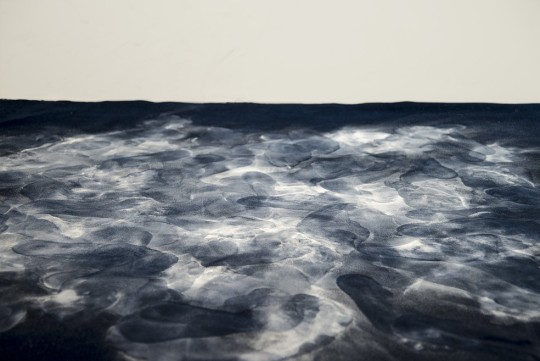
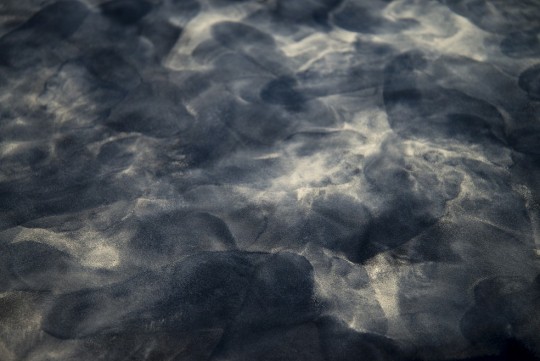
Seen: Latino Arts Inc., Milwaukee 2018
Artist: Johana Moscoso
Title: Lohs see-Eh-teh coh-LOH-rehs
Date: 2018
Materials: Performative installation
About the Artist: Johana Moscoso (born 1981) is a Colombian - American artist currently living and working in Tennessee, USA. She is an artist who explores co-narratives of South American and North American cultures. She incorporates a variety of mediums into installations that express her interest in gender roles, culture, and migration.In her fiber work she utilizes stitch and embroidery to create tapestries that reference the migratory journeys of her family. These tapestries become abstract maps made that trace the time, labor, and nostalgia of these journeys.
In her performance work she strives to evoke intimate feelings that cannot be described in words but are better expressed through movement. By using traditional Latino dance in her performances Moscoso questions gender roles in Hispanic culture. Engaging these fragile human states is the pivotal endeavor in her performance work. Ultimately, her application of fiber, textiles and performance with physical environments has enabled her to create performative installations that empower the feminine presence and celebrate culture and migration.
0 notes
Photo


Seen: Whitney Museum, New York 2018
Artist: Ronny Quevedo
Title: ULAMA-ULE-ALLEY OOP
Date: 2017
Materials: Enamel, silver leaf, vinyl, and pencil on mylar on paper
About the Artist: Ronny Quevedo (b.1981, Guayaquil, Ecuador) works in a variety of mediums including sculpture and drawing.
4 notes
·
View notes
Photo

Seen: Whitney Museum, New York 2018
Artist: Ronny Quevedo
Title: every measure of zero, (wari textile)
Date: 2017
Materials: Gold leaf on dressmaker’s tracing paper
About the Artist: Ronny Quevedo (b.1981, Guayaquil, Ecuador) works in a variety of mediums including sculpture and drawing.
1 note
·
View note
Photo

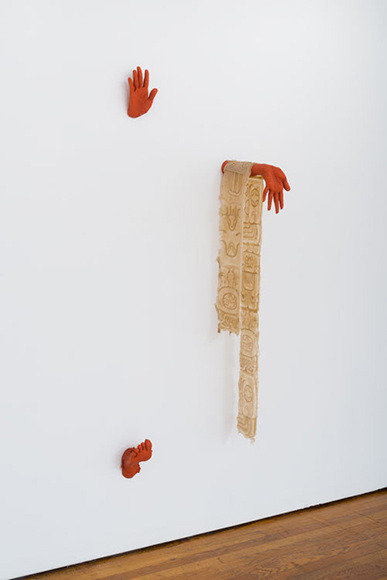
Seen: Whitney Museum, New York 2018
Artist: Clarissa Tossin
Title: A cycle of time we don’t understand (reversed, invented, and rearranged)
Date: 2017
Materials: Silicone, walnut, faux terracotta (dyed plaster)
About the Artist: Influenced by her childhood in Brazil’s capital, Brasília, which was built as a modernist utopia, Clarissa Tossin centers her practice on investigating the promises, legacies, and failures of modernity, globalism, and utopian idealism. Much of her work deals with cultural and economic exchanges between the United States—an established world power—and Brazil—which is poised to become one of the next international economic leaders.
16 notes
·
View notes
Photo

Seen: Whitney Museum, New York 2018
Artist: David Wojnarowicz
Title: Peter Hujar Dreaming/Yukio Mishma: St Sebastain
Date: 1982
Materials: Spray paint on wood
About the Artist: David Wojnarowicz (1954–1992) created a body of work that spanned photography, painting, music, film, sculpture, writing, and activism. Largely self-taught, he came to prominence in New York in the 1980s, a period marked by creative energy, financial precariousness, and profound cultural changes. Intersecting movements—graffiti, new and no wave music, conceptual photography, performance, and neo-expressionist painting—made New York a laboratory for innovation. Wojnarowicz refused a signature style, adopting a wide variety of techniques with an attitude of radical possibility. Distrustful of inherited structures—a feeling amplified by the resurgence of conservative politics—he varied his repertoire to better infiltrate the prevailing culture.
5 notes
·
View notes
Photo
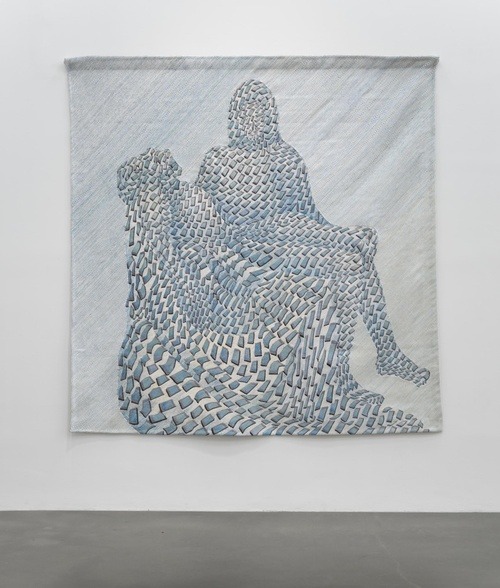

Seen: New Museum, New York 2018
Artist: Thomas Bayrle
Title: IPhone Pieta
Date: 2017
Materials: Silk, linen, cotton and natural viscose
About the Artist: Thomas Bayrle’s pioneering work is characterised by an obsessive preoccupation with repetition and grid structures, conceiving and representing the world around him as a multitude of social threads. Bayrle began his career as a designer and, after an apprenticeship within a textile factory, he became fascinated by mechanisation and its repetitive patterns and rhythms. From this experience, Bayrle’s work retained the motif of the human figure in the machine age and the structure of the grid. Influenced by pop art, and notably Sigmar Polke in Germany, the Frankfurt School, the economic post-war boom, and most importantly the large American presence in Frankfurt, Bayrle abandoned painting in 1967 to produce serigraphic works reflecting on mass society. Like fellow Frankfurt artist and friend Peter Roehr, Bayrle adopted serial repetition as a means to critically engage with mass consumerism. Placing objects and motives from the daily life and mass advertising into serial patterns, Bayrle’s work reflects on the individual within socio-political, industrial, and technological entities.
4 notes
·
View notes
Photo
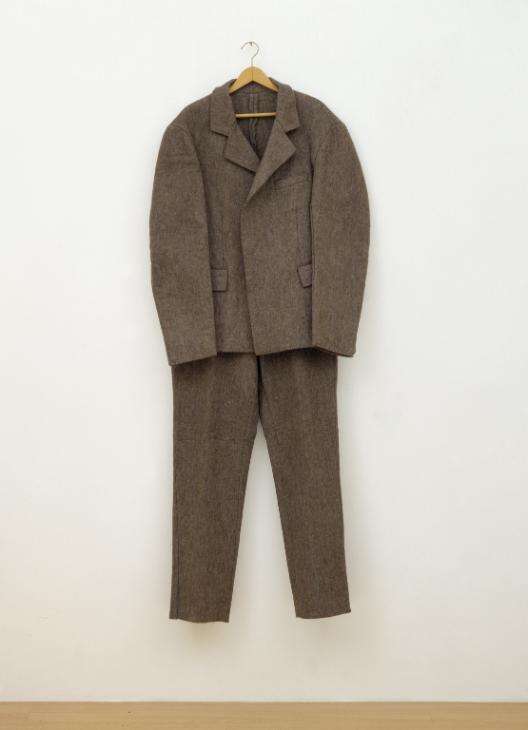
Seen: Milwaukee Art Museum, Milwaukee Wisconsin 2018
Artist: Joseph Beuys
Title: Felt Suit
Date: 1970
Materials: Felt
About the Artist: Joseph Beuys, who is recognized as one of the most influential artists of the postwar period, had a grand and ambitious goal for his work: the transformation of Western culture into a more peaceful, democratic, and creative milieu. His multifaceted career, which included sculpture, performance, lectures, activism, and even a campaign for elected office, were all part of an “expanded concept of art” that was aimed at advancing his utopian vision. In all its forms, his work is dense and highly allusive and draws on much of the accumulated knowledge of Western civilization, including history, religion, natural sciences, economic theory, and myth. A charismatic teacher, Beuys was mentor to a generation of younger artists who were inspired by his passionate fusion of art, life, and activism.
2 notes
·
View notes
Photo

Seen: Intuit: The Center for Intuitive and Outsider Art, Chicago 2016
Artist: Steven Ashby
Title: Untitled (They Took Them for Everything)
Date: 1963
Materials: Paint and fabric on carved wood
About the Artist: "I wake up with an idea that won't let me get back to sleep. So I get up and make that idea." Steve Ashby converted most of his ideas into objects in the early 1960s after his wife had died and he retired from his years of work as a farm hand and gardener. Ashby's favorite subjects were figures and animals, often inspired by the agrarian activities of Fauquier County, Virginia, where his ancestors had been slaves. Some of his figures were wind-activated to perform various activities that ranged from the domestic to the pornographic. Others include parts that move when handled.
#Intuit: The Center for Intuitive and Outsider Art#Chicago#2016#Outsider Art#Steven Ashby#Woodworking#Painting
0 notes
Photo


Seen: MOCA, Los Angeles 2019
Artist: Cynthia Carlson
Title: Tough Shift for M.I.T.
Date: 1981
Materials: Unknown
About the Artist: Cynthia Carlson is a painter. Her work is in the collections of the Metropolitan Museum of Art, the Guggenheim Museum, and Queens Museum in New York; the Pennsylvania Academy of the Fine Arts, Philadelphia; the Museum of Contemporary Art, Chicago; and elsewhere. Carlson’s one-person exhibitions and installations include Essex Flowers Gallery, New York, NY (2018); Gallery Gris, Hudson, NY (2017); and "Portraits" at John Davis Gallery, Hudson, NY (2012). She is a four-time winner of the Professional Staff Congress-City University of New York Research Award and a recipient of the 1987 National Endowment for the Arts Fellowship. She has taught at the University of Colorado, Boulder; the University of the Arts in Philadelphia; and Queens College in New York, where she is a professor emeritus.
0 notes
Photo
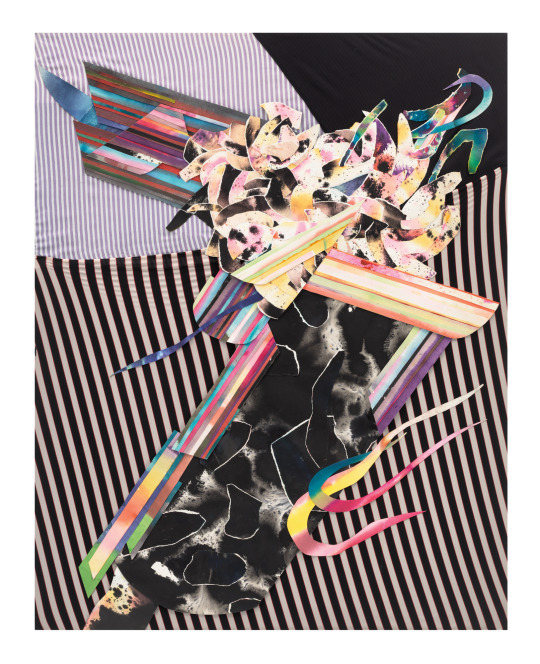
Seen: MOCA, Los Angeles 2019
Artist: Al Loving
Title: Untitled
Date: 1982
Materials: Mixed Media
About the Artist: Born in Detroit in 1935, Loving relocated to New York in 1968. Unlike other African-American artists whose art focused on the racial politics of the era, Loving was a staunch abstractionist. His works were built upon strict yet simple geometric shapes—often hexagonal or cubic modules. Inspired by Hans Hoffmann (who taught Loving’s mentor Al Mullen), Loving concentrated on the tension between flatness and spatial illusionism. He explored this tension using a hard-edged geometric vocabulary related to Minimalism—as in Untitled, 1969, which uses a strategic layering of cubic forms and juxtaposition of warm and cool colors to create an optical play of three-dimensionality.
0 notes